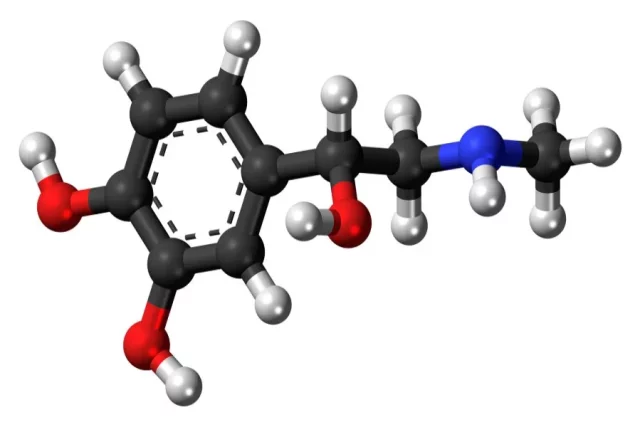In multicellular organisms, hormones control various physiological and behavioral processes. Hormones, a kind of signaling molecule, are carried to many organs and have a cumulative effect on how the body grows and develops. VIP, or vasoactive intestinal peptide, is one such endogenous peptide hormone. Among VIP’s many potential functions, we will discuss its neuromodulatory and neurotransmitter roles in depth here.
Like other biochemicals, VIP peptide has to be kept at the proper concentrations for maximum benefit in the organism. VIP peptide levels may become unbalanced for various reasons, including aging, illness (particularly VIPoma, a rare endocrine tumor), and even plain old times. Visit this website for more resources.
VIP Peptide: What is it?
VIP is a 28-residue peptide hormone abundant in the brain and the rest of the nervous system (including the pancreas, gut, and brain). Studies suggest the peptide may be found across the organism, reflecting its pleiotropic activities as a neurotransmitter, vasodilator, immunological regulator, and secretagogue.
VIP has attracted much attention from scientists eager to learn about its many potential applications. Some of the essential features of the peptide are briefly discussed here.
VIP peptide History
An isolated vasodilator from the small intestine of swine, VIP peptide, was initially found in the 1970s. A few years later, experts found VIP in the human cardiovascular, gastrointestinal, and reproductive systems and the brain. Since researchers found VIP everywhere, it was associated with many biological processes, such as immune system activity, growth and development, and cellular processes.
VIP Peptide and the SCN Route
Above the optic chiasm lies a tiny brain region called the suprachiasmatic nucleus (SCN). The sleep-wake cycle occurs nearly precisely once every 24 hours due to the circadian cycle, a natural mechanism. This activity is supposedly more significant during the day and lowers as darkness falls.
VIP peptide has been hypothesized to help keep the lines of communication open between brain cells. The lateral portion of the SCN, which also contains the optic chiasm, is home to VIP and its accompanying neurons. Retinal information is transferred to the SCN by these neurons from the optic chiasm. Doing so aids the body in keeping its natural 24-hour cycle.
VIP Peptide and G Protein-Coupled Receptor-Mediated Binding
VIP peptide has been speculated to interact with VPAC1, VPAC2, and PAC1 G protein-coupled receptors. The activation of the adenylate cyclase pathway (a crucial regulatory enzyme) is suspected to be the consequence of its binding to these receptors.
The location of the three receptors is the main distinction between them. However, VPAC2 is expressed in the brain and other peripheral areas such as the pancreas, heart, kidney, skeletal muscles, gastrointestinal tract, and reproductive system, whereas PAC1 is mainly expressed in the brain and adrenal region.
Findings imply that VIP and receptor binding may influence several targets in the brain and the rest of the organism because of the receptors’ widespread distribution (depending on receptor location).
VIP Peptide Properties
VIP peptide has been speculated to have the following theorized properties, among many others:
- It may bring down the BP
- It may increase the relaxation of the gastrointestinal tract’s smooth muscles.
- It may induce intestinal production of water and electrolytes
- It may aid in heart failure therapy
- It may raise blood pressure via increasing muscular contraction in the heart.
- It may boost the liver’s glycogen metabolism
- It may maintain an appropriate level of vaginal lubrication
- It may limit prolactin production
- It may dial back the body’s internal clock (sleep-wake cycle)
- It may offer antioxidant protection for the brain
- It may lessen swelling
- It may change heart fibrosis
- It may manage lung function
VIP Peptide and Alzheimer’s
Although it is unclear what part VIP may play in Alzheimer’s disease, it has been suggested that peptide levels and related neuronal levels may be considerably reduced in subjects with this cognitive impairment. Investigations purport that presenting a mouse model of induced cognitive impairment with VIP peptide may decrease the number of beta-amyloid cells. This finding substantiates the peptide’s potential to slow the development of Alzheimer’s disease.
VIP Peptide and Cardiac Fibrosis
The significant cardiac dysfunctions brought on by cardiac fibrosis include weaker contractions, dysfunctional valves, and irregular heart rhythms, so it’s no surprise that this condition is associated with the last stages of several different cardiac diseases. A heart transplant is often necessary for research models with this disease.
Angiotensinogen receptors and angiotensinogen converting enzymes (ACE) are strongly linked in the pathogenesis of cardiac fibrosis, both of which cause vascular inflammation. VIP peptide has been hypothesized to lessen the effects of cardiac fibrosis in mice research models.














